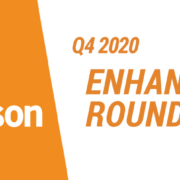Reflections on Marketing Automation in 2016
 We live in a time of extraordinary change. Marketing has come a long way in a small amount of time. And the industry is just continuing to refine itself! To be able to entirely appreciate the current state of marketing automation, it’s best to briefly acknowledge where it has been.
We live in a time of extraordinary change. Marketing has come a long way in a small amount of time. And the industry is just continuing to refine itself! To be able to entirely appreciate the current state of marketing automation, it’s best to briefly acknowledge where it has been.
Marketing automation first came into existence in 1992, focusing on email alone. Businesses did not have a lot of online presence at the time, so there wasn’t really a huge opportunity for it to take off until the late 2000’s. Now, it has grown its capabilities so greatly that it is able to help companies deliver various marketing content through different channels to customers based on their online behavior.
As digital platforms become increasingly more powerful, there is more untapped data at our fingertips than ever. The need for organizing, integrating, and maximizing the benefits of that data has become essential. The phrase “work smarter, not harder” rings true. We have access to increasing demographic, psychographic, historical, and behavioral information. It’s information overload!
Marketing Automation now has the ability to capture all of this data, listen to it, interpret it, and utilize it in the most effective ways possible. The field of marketing automation is something that started small, exploded, and is now refining itself. Technology is more intuitive. Platforms are becoming easier to navigate. Consequently, the tools are more often used to their fullest potential. Companies such as us have mastered content personalization, customizable resource centers, and integration.
What’s to Come in Marketing Automation
The marketing automation industry is somewhat saturated. This can be beneficial to the end user, in that companies must listen to their clients’ needs, wishes, and dreams. Even more customization, personalization and integration (with systems like mail or additional CRMs) is in the near future.
Another thing that is fast-approaching is an upgrade to the customer journey, or more specifically customer journey optimization. Instead of combining many customers’ courses of action into a few general paths, automation is challenged to grow to support infinite customer journeys. According to industry expert David Raab, this is “quite different from pre-determining an ideal customer journey and trying to force customers to follow it.” The industry seems to be taking back control over the user experience, instead of just reacting to it.
It’s an exciting time in marketing automation. With every challenge comes greater exploration and innovation. What do you see on the horizon for the industry? We look forward to hearing your feedback below!



